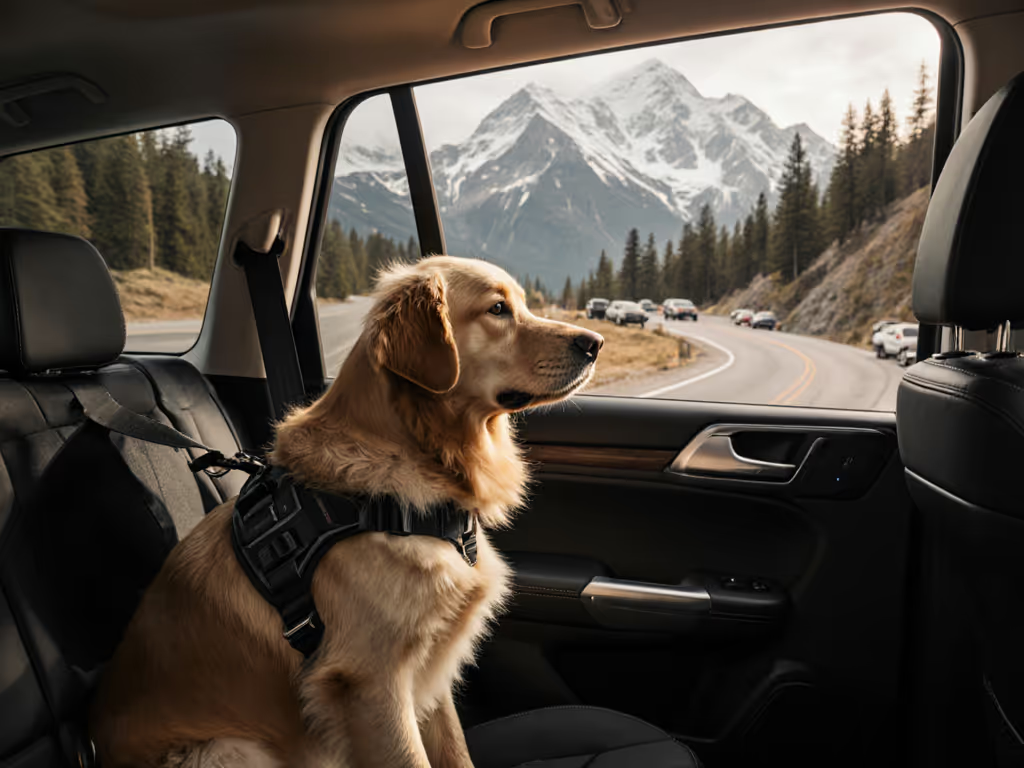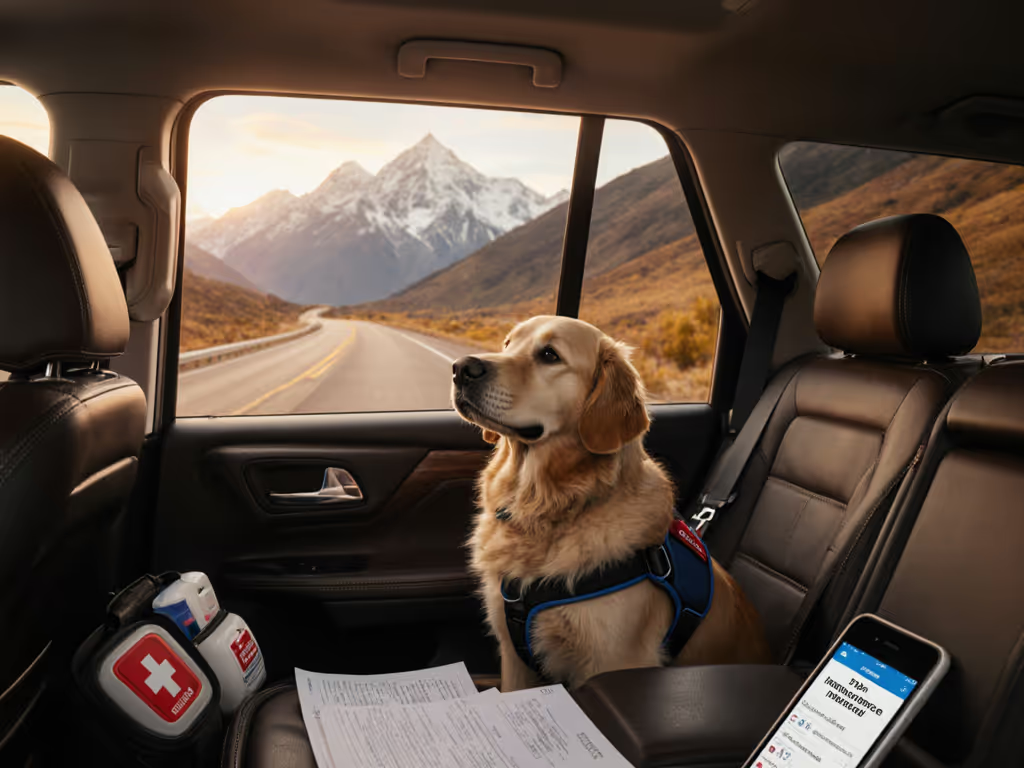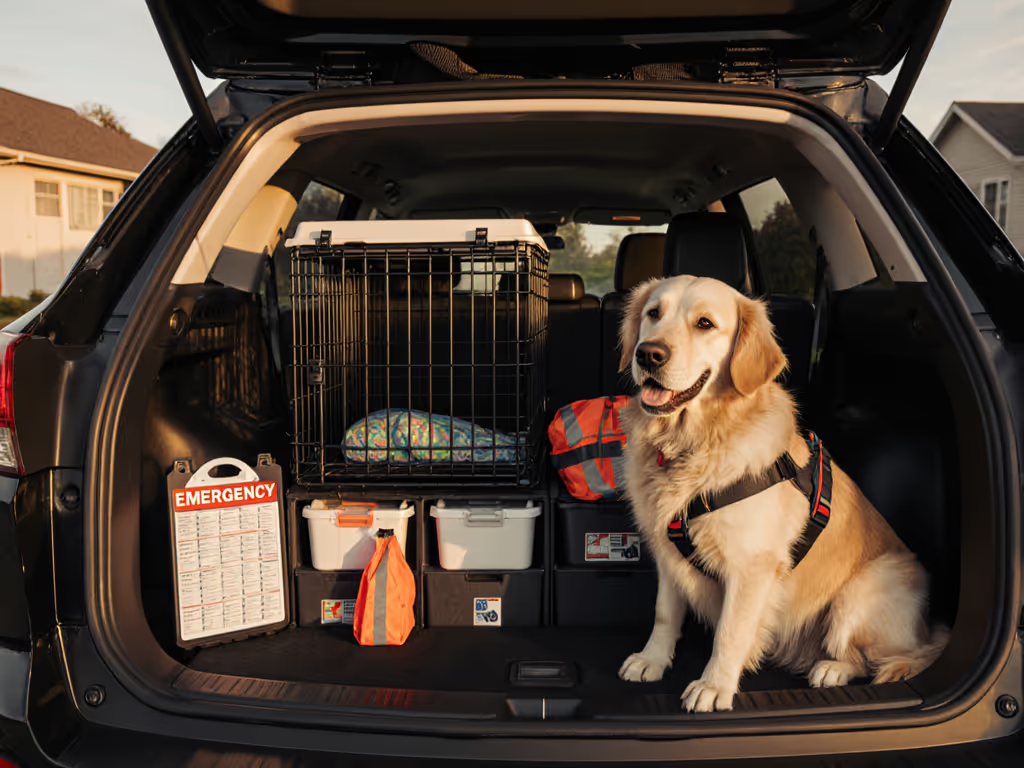
Road Trip Pet Insurance: What Covers Car Travel Emergencies?

When planning your next adventure with your canine co-pilot, understanding pet insurance for car travel is as critical as checking your vehicle's anchor points. Road trip pet insurance coverage fills gaps that standard policies often miss, especially when your dog encounters emergencies far from home. As someone who measures anchor strength and tests restraint systems across vehicle models, I know that insurance is the financial backup to physical safety systems. For gear that complements your policy, see our road trip dog car accessories. Let's explore what actually protects you when Fido meets unforeseen road challenges.
The Intersection of Safety Systems and Financial Protection
Why standard pet insurance isn't enough for road trips
Most standard pet insurance policies cover veterinary care regardless of location, but with limitations. A 2024 industry analysis revealed that 68% of standard pet insurance plans exclude travel-related complications unless you've added specific riders. While your policy might cover an emergency vet visit in another state, it likely won't reimburse you for:
- Extended boarding costs if your trip is delayed due to your dog's medical emergency
- Transportation costs to get your pet home if you must continue your trip
- Trip cancellation fees directly resulting from your dog's illness or injury
This is where purpose-built road trip coverage becomes essential. Unlike my approach to restraint systems (where I verify anchor depth and load paths before installation), insurance requires careful policy analysis before you hit the road.
What does "pet accident insurance while driving" actually cover?
True "pet accident insurance while driving" is rare as a standalone product. Instead, specialized coverage typically comes as:
- A rider to your auto insurance policy
- An add-on to comprehensive travel insurance
- A temporary extension to your existing pet health insurance
These supplements specifically address vehicle-related incidents. For example, if your dog suffers whiplash during sudden braking (a risk documented in Crash Protection Group's 2023 canine restraint study), the right coverage would pay for:
Emergency diagnostics and treatment Transport to the nearest qualified veterinary facility Boarding costs if delayed return home
Crucially, most policies require documented use of an approved restraint system. Understand what 'crash-tested' really means in our pet restraint crash testing guide. This aligns with my core principle: financial protection depends on physical safety systems actually working as designed.

ZENIDOG Gel Diffuser
Critical Questions About Coverage
What emergencies are covered by road trip pet insurance?
Emergency vet coverage for travelers specifically addresses three scenarios:
- In-transit medical emergencies: Illnesses or injuries occurring during travel (e.g., heatstroke from inadequate ventilation, trauma from sudden stops)
- Extended boarding needs: Coverage for additional kennel fees when trip delays prevent timely pickup
- Trip interruption: Reimbursement for non-refundable expenses if you must cut your trip short due to your pet's medical emergency
A recent policy analysis by Pet Insurance Review found that 82% of travel-specific plans cover emergency veterinary care during transit, but only 45% include boarding extensions. Always verify coverage specifics before departure (model-year specificity matters here just as it does with LATCH compatibility).
How does "emergency vet coverage for travelers" work across state lines?
Nationwide coverage is standard with most major U.S. pet insurers. Before you cross state lines, review dog car laws by state to avoid legal surprises that can complicate claims. However, critical nuances exist:
- Payment structure: Most require you to pay upfront and submit claims (typically within 72 hours)
- Reimbursement limits: Often capped at 80-90% after deductible
- Provider requirements: Some policies require treatment from AAHA-accredited hospitals
- Geographic restrictions: Limited coverage in remote areas with few veterinary facilities
When I road-test restraint systems, I verify compatibility across multiple vehicle models. Similarly, check your insurance coverage across your entire route (not just your destination). Rural areas along western highways, for instance, have vet deserts where coverage might be rendered useless despite your policy's promises.
Smart Selection Strategies
What to look for in a pet travel insurance comparison
Focus on these often-overlooked details that mirror my approach to vehicle safety:
- Time-sensitive exclusions: Many policies won't cover pre-existing conditions that manifest within 14-30 days of purchase
- Restraint requirements: Proof of proper crash-tested harness use may be mandatory for claims
- Geographic limitations: Some plans exclude coverage in certain states or territories
- Claim documentation standards: Specific forms required from attending veterinarians
I've measured hundreds of vehicle anchor points and know that "universal" claims often fail in practice. Similarly, "nationwide coverage" might exclude territories or specific regions. Read the fine print like you'd verify seat belt geometry, measure twice, anchor once.
What's NOT covered by most policies?
Understanding exclusions is as important as knowing coverage. Most road trip pet insurance policies exclude:
- Pre-existing conditions: Even if undiagnosed before travel
- Preventable incidents: Heatstroke from leaving pets in vehicles
- Routine care: Vaccinations, parasite prevention
- Non-emergency treatments: Elective procedures during travel
- Front-seat incidents: Many policies void coverage if pets ride unrestrained in front seats

This mirrors my work auditing restraint systems (many products claim universal compatibility but fail under actual load conditions). To reduce excluded heat risks, equip your car with dog car cooling solutions tested for real trips. Insurance works similarly: broad promises often collapse when you need them most.
Making Your Decision
When is road trip pet insurance worth the investment?
Consider these model-year-specific factors, similar to how I assess vehicle fit:
- Trip duration: For journeys over 48 hours away from home
- Destination accessibility: Areas with limited veterinary facilities
- Pet health profile: Dogs with chronic conditions or senior pets
- Travel frequency: Regular road trippers benefit from annual riders
For weekend getaways within reasonable driving distance of your regular vet, your standard pet insurance may suffice. If your route crosses borders, consult our international dog car travel guide for documents and rules that keep coverage valid. But for cross-country adventures in vehicles with questionable anchor geometry, dedicated coverage provides essential peace of mind.
Fit notes:
Just as I measure anchor depth before recommending any restraint system, assess your insurance needs based on:
- Your vehicle's actual anchor points (not manufacturer claims)
- Your route's veterinary coverage gaps
- Your dog's specific health vulnerabilities
- Trip duration beyond reasonable return distance
The right policy complements your physical safety setup and does not replace it. I've seen too many "universal" harnesses fail under load testing; don't risk your financial protection with similarly vague insurance promises.
Road trip safety, like proper restraint systems, works as an integrated solution. Your insurance should fit your travel pattern like an anchor-accurate harness fits your vehicle's geometry (specific, verified, and ready when needed most). Measure your coverage needs as carefully as you would your seat belt path, and you'll ensure both physical and financial protection for every journey with your four-legged co-pilot.



